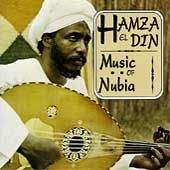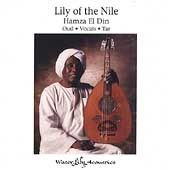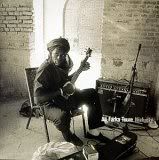
Ali Ibrahim "Farka" Toure.. (October 31, 1939 - March 6, 2006) was born in 1939 in Gourmararusse (in the Timbuktu region), Mali, into the noble Sonhai family. Ali, was the tenth son of his mother but the only one to survive past infancy. He was descended from the ancient military force known as the Arma, and was ethnically related to the Songrai (Songhai) and Peul peoples of northern Mali.
Being of noble birth, he wasn't supposed to have have taken up music. His family disapproved because the musician profession is normally inherited in Malian society. However, having an independent and strong willed character, once he decided to take up music, there was no stopping him. This should come as no surprise, when he was a baby, his parents nicknamed him "Farka" , meaning the donkey, symbolising a strong, rugged determination.
He began playing the gurkel in 1950. This is a single string African guitar that he chose because of its power to draw out the spirits. He also taught himself the njarka, a single string fiddle that is used often in his performances. Then in 1956, Ali Farka Toure saw performance by the great Guinean guitarist Keita Fodeba in Bamako in 1956 and was heavily influenced to become a guitarist. He taught himself to adapt traditional songs to the guitar using the techniques he had learned on the gurkel.
As the first African bluesman to achieve widespread popularity on his home continent, Tour.. was often known as "the African John Lee Hooker". Musically, the many superpositions of guitars and rhythms in his music were similar to R. L. Burnside's hypnotic blues style. He usually sang in one of several African languages, mostly Songhay, Fulfulde, or Tamasheq, as on his breakthrough album, Ali Farka Tour.., which established his reputation in the world music community.
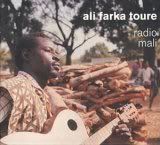
During a visit to Bamako in the late 1960's, artists such as Ray Charles, Otis Redding and most importantly John Lee Hooker introduced Ali Farka Toure to African-American music. At first, he thought that Hooker was playing Malian music, but then realized that this music coming from America had deep African roots. Ali Farka Toure was also inspired by Hooker's strength as a performer and began to incorporate elements into his own playing. During those years Ali Farka Toure composed, sang and performed with the famous Troupe 117, a group created by the Malian government after the country's independence.
In 1990, Toure abandoned music in order to tend to his farm, in his native Timbuktu. His producer managed to convince him otherwise and to return to his guitar. 1994's Talking Timbuktu, a collaboration with Ry Cooder, sold promisingly well in western markets and the album won a Grammy award. This success however, was followed by a hiatus from releases in America and Europe.Tour.. is noted as the mentor to popular Malian musician Afel Bocoum.
Despite the success with Talking Timbuktu, Ali Farka Toure wasn't willing to leave his rice farm in Mali to record an album. For the recording of the album Niafunke, Producer Nick Gold had to set up the equipment in an abandoned brick hall in Niafunke, Mali. He as forced to use portable equipment and gasoline generators since Toure's hometown had no power lines. The crew had to wait till Farka Toure was done with his chores on the farm and ready to play the guitar. This was a more traditional album, focusing on African rhythms and beats. Farka Toure said: "We were in the middle of the landscape which inspired the music and that in turn inspired myself and the musicians. . . . In the West, perhaps this music is just entertainment and I don't expect people to understand."
In 2004 Tour.. was elected mayor of Niafunk.. and spent his own money grading the roads, putting in sewer canals and fuelling a generator that provided the impoverished town with electricity as well as tackling the malaria problem, and establishing a tree planting project. Ali has remained extremely loyal to his homeland and spends most of his time in the area, working on his farm.
In September 2005, he released the album In the Heart of the Moon, a collaboration with Toumani Diabat.., for which he received a second Grammy award. Savane, his last album posthumously released in July 2006, was received with wide acclaim by professionals and fans alike. Since September 2006 it has been topping the World Music Charts Europe (WMCE), a chart voted by the leading World Music specialists around Europe. Ali Farka Tour.. has also recently been nominated for the BBC Radio 3 awards 2007.
On 7 March 2006 the Ministry of Culture of Mali announced his death at age 67 in Bamako from bone cancer, against which he had been battling for some time. World Circuit, Ali's record label made a statement that he recorded several tracks with his son Vieux Farka Tour.. for Vieux's debut album. They expect to be released the album in early 2007.
The Malian ministry of culture has recently announced that a homage will be paid to Ali Farka Tour.. in Bamako and Niafunke on March 6, 7 and 8 2007. Activities include conferences, debates and a mega concert in a football stadium attended by the likes of Toumani Diabate, Oumou Sangare, Manu Dibango, Youssou N'dour, Alpha Blondy, Bembeya Jazz, Ry Cooder, Marcus James, Bonnie Raitt, Peter Gabriel, Ramata Diakit.., Boubacar Traor..(Kar Kar), Habib Koit.., Salif Keita, Baaba Maal, Tiken Jah Fakoly, Carlos Santana, Tracy Chapman[1].
Listen to Ali Farka Tour.. on
Kemet Music Radio Discography
Ali Tour.. Farka - 1976 - Sonafric
Special « Biennale du Mali » - 1976 - Sonafric
Biennale - 1978 - Sonafric
Ali Tour.. Farka - 1979 - Sonafric
Ali Tour.. dit Farka - 1980 - Sonafric
Ali Farka Tour.. (Red) - 1984 - Sonodisc/Esperance
Ali Farka Tour.. (Green) - 1988 - Sonodisc/Esperance
Ali Farka Tour.. World Circuit - 1989 - WCD007 / Mango
African Blues - 1990 - Shanachie
The River - 1990 - World Circuit WCD017 / Mango
The Source - 1993 - World Circuit WCD030 / Hannibal with Taj Mahal
Talking Timbuktu - 1994 - World Circuit WCD040 / Hannibal (with Ry Cooder)
Radio Mali - 1996 - World Circuit WCD044 / Nonesuch (remastered selections of original albums from 1975 through 1980)
Niafunke - 1999 - World Circuit WCD054 / Hannibal
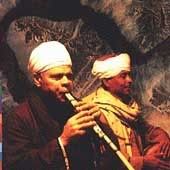
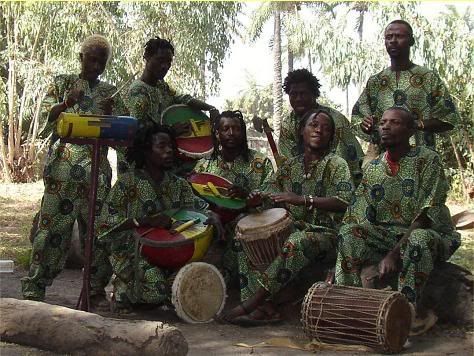 The members of the band Guinea C may come from varied backgrounds – members include a dance teacher, a former football player, an avid cook and four kin of a famous griot family – but they all share a deep love for their native country. So much so that they named their band after it, and the "C' stands for Conakry which was added to further distinguish it from its neighbour Guinea Bissau. That is not to say that they have overlooked the support they have gained in their adopted country of Gambia. Formed in 2004, their first album, Bakadaji, released in 2007 is named for the hotel that they call their home base and where they often rehearse their songs. It was with the help of the manager of Hotel Bakadaji, along with some tourist friends, that Guinea C was able to produce its first album, recorded by Wole Rendall at AFG studio, in the Gambian city of Serrekunda.
The members of the band Guinea C may come from varied backgrounds – members include a dance teacher, a former football player, an avid cook and four kin of a famous griot family – but they all share a deep love for their native country. So much so that they named their band after it, and the "C' stands for Conakry which was added to further distinguish it from its neighbour Guinea Bissau. That is not to say that they have overlooked the support they have gained in their adopted country of Gambia. Formed in 2004, their first album, Bakadaji, released in 2007 is named for the hotel that they call their home base and where they often rehearse their songs. It was with the help of the manager of Hotel Bakadaji, along with some tourist friends, that Guinea C was able to produce its first album, recorded by Wole Rendall at AFG studio, in the Gambian city of Serrekunda. 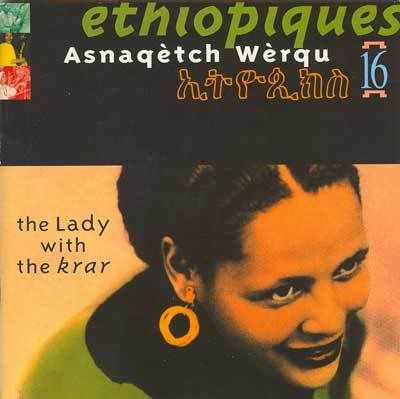 Asnaqetch Werqu was born an orphan who went on to become the first actress to appear on the Ethiopian stage. However, her musical talent garnered her attention that outshone her acting career in the National Theatre. Reportedly, she initially worked as an actress and dancer in the Haile Sellassie I theatre troupe and was actually the first woman to be part of this troupe. At an early age Asnaqetch taught herself to play the krar and eventually went on to become famous as a master of the krar (lyre) and a singer who was considered to be the last great storyteller to engage in the tradition of poetic jousting, following in the traditions of the Azmaris or artist caste.
Asnaqetch Werqu was born an orphan who went on to become the first actress to appear on the Ethiopian stage. However, her musical talent garnered her attention that outshone her acting career in the National Theatre. Reportedly, she initially worked as an actress and dancer in the Haile Sellassie I theatre troupe and was actually the first woman to be part of this troupe. At an early age Asnaqetch taught herself to play the krar and eventually went on to become famous as a master of the krar (lyre) and a singer who was considered to be the last great storyteller to engage in the tradition of poetic jousting, following in the traditions of the Azmaris or artist caste.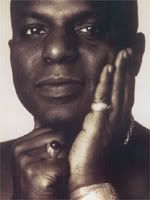
 As a musical director, Mahmoud Fadl contributed to a four album project called "Salamat", released on Piranha records, which focussed on the music of the legendary and suppressed Nubian culture. He has four albums released under his own name and on one of them pays a Nubian homage to deceased pan-Arabian diva Umm Kalthoum, showcasing the voice of Salwa Abou Greisha from the famous Greisha family of Nubian musicians, with accompaniment from the Cairo Opera. Mahmoud's album "Drummers of the Nile", features ancient music from along the nile, and he collaborates with fellow drummers Gaafar Hargal and Hamdi Matoul, Nubian wedding diva Salma and many more musicians. He has also collaborated with The Klezmatics (New York), Orientalist piano player Maurice El Medioni (Marseille/Oran) and the famous gypsy saxophone player Ferus Mustafov (Skopje). Mahmoud also introduced western audiences to the distinguished grandmaster of oriental trumpet, Samy El Bably, on an alluring album called "Love Letters from King Tut-Ank Amen."
As a musical director, Mahmoud Fadl contributed to a four album project called "Salamat", released on Piranha records, which focussed on the music of the legendary and suppressed Nubian culture. He has four albums released under his own name and on one of them pays a Nubian homage to deceased pan-Arabian diva Umm Kalthoum, showcasing the voice of Salwa Abou Greisha from the famous Greisha family of Nubian musicians, with accompaniment from the Cairo Opera. Mahmoud's album "Drummers of the Nile", features ancient music from along the nile, and he collaborates with fellow drummers Gaafar Hargal and Hamdi Matoul, Nubian wedding diva Salma and many more musicians. He has also collaborated with The Klezmatics (New York), Orientalist piano player Maurice El Medioni (Marseille/Oran) and the famous gypsy saxophone player Ferus Mustafov (Skopje). Mahmoud also introduced western audiences to the distinguished grandmaster of oriental trumpet, Samy El Bably, on an alluring album called "Love Letters from King Tut-Ank Amen."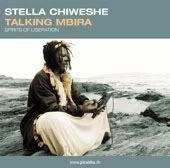
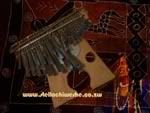 The mbira has a very comforting sound, and at times can be reminiscent of running water. It is considered a sacred instrument and traditionally has been played at religious ceremonies (bira) and at social events (mapira) as well as within the royal Shona Courts. It is often used to communicate with ancestor spirits as well as for healing, guidance and success in battle. In the 'bira' ceremonies, the mbira is combined with the hosho (gourd rattles), singing and sometimes with the ngona (drum). Before the independence of Zimbabwe, Stella would attend these 'secret' ceremonies at night in colonial Zimbabwe (Rhodesia) and go to work as a maid during the day.
The mbira has a very comforting sound, and at times can be reminiscent of running water. It is considered a sacred instrument and traditionally has been played at religious ceremonies (bira) and at social events (mapira) as well as within the royal Shona Courts. It is often used to communicate with ancestor spirits as well as for healing, guidance and success in battle. In the 'bira' ceremonies, the mbira is combined with the hosho (gourd rattles), singing and sometimes with the ngona (drum). Before the independence of Zimbabwe, Stella would attend these 'secret' ceremonies at night in colonial Zimbabwe (Rhodesia) and go to work as a maid during the day.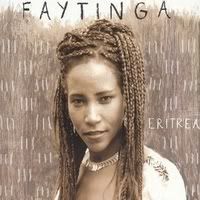 Faytinga, one of Eritrea's best known singers, is a member of the Kunama tribe. Her mother was of Blen descent (a Cushitic speaking people) from the highlands, while her father was a member of the Semitic speaking Tigrinya peoples. She was born in 1964, and was involved in Eiretrea's struggle for independence from Ethiopia since she was 14 years of age. Faytinga's father, Faïïd Tinga, was a war hero and was already a part Eritrea's 30 year liberation struggle at Faytinga's birth.
Faytinga, one of Eritrea's best known singers, is a member of the Kunama tribe. Her mother was of Blen descent (a Cushitic speaking people) from the highlands, while her father was a member of the Semitic speaking Tigrinya peoples. She was born in 1964, and was involved in Eiretrea's struggle for independence from Ethiopia since she was 14 years of age. Faytinga's father, Faïïd Tinga, was a war hero and was already a part Eritrea's 30 year liberation struggle at Faytinga's birth.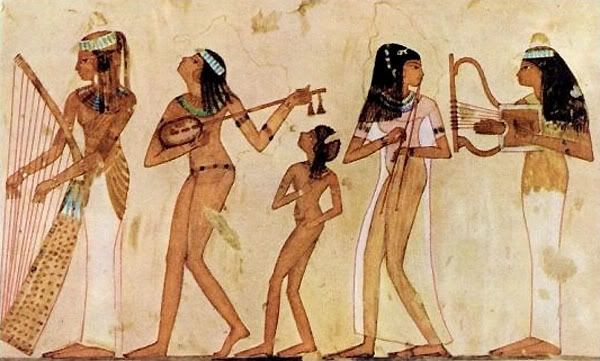 The Egyptian Nefer, a musical instrument from Pharaonic times, is the predecessor to the Oud. It was built and carved from one piece of wood and, like the Oud, is classified as a chordaphone. On ceremonial and religious occasions the nefer (lute) could be accompanied by the harp, lyre and sacred sistrum. Sometimes a small group would accompany the music with hand claps.
The Egyptian Nefer, a musical instrument from Pharaonic times, is the predecessor to the Oud. It was built and carved from one piece of wood and, like the Oud, is classified as a chordaphone. On ceremonial and religious occasions the nefer (lute) could be accompanied by the harp, lyre and sacred sistrum. Sometimes a small group would accompany the music with hand claps. It was due to a dispute with his mentor and teacher Ishak, that caused Ziryab to leave North Africa for the Spanish city of Al-Andalus, where after writing an introductory letter to Al Hakam I, the current ruler of Spain, he was invited to Cordova in 822 AD. Ziryab also found favour with and his son and sucessor, Adbur-Rahman II. Ziryab became a very distinguished and wealthy singer in the social circles of Moorish Spain and was well-known outside Moorish Spain's borders. Ziryab founded the first music conservatory in Cordova, invented a plectum made of eagle quill instead of the commonly used wooden ones, and he added a fifth string to the Oud greatly improving its harmony. It was in fact in Moorish Spain that the Oud acquired much of its current characteristics. The Moors constructed many types of Ouds of different tones with varying number of strings.
It was due to a dispute with his mentor and teacher Ishak, that caused Ziryab to leave North Africa for the Spanish city of Al-Andalus, where after writing an introductory letter to Al Hakam I, the current ruler of Spain, he was invited to Cordova in 822 AD. Ziryab also found favour with and his son and sucessor, Adbur-Rahman II. Ziryab became a very distinguished and wealthy singer in the social circles of Moorish Spain and was well-known outside Moorish Spain's borders. Ziryab founded the first music conservatory in Cordova, invented a plectum made of eagle quill instead of the commonly used wooden ones, and he added a fifth string to the Oud greatly improving its harmony. It was in fact in Moorish Spain that the Oud acquired much of its current characteristics. The Moors constructed many types of Ouds of different tones with varying number of strings.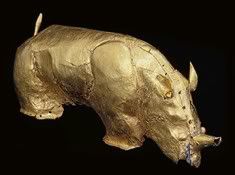 One thousand years ago,Mapungubwe (present day South Africa) in Limpopo province was the centre of the largest kingdom in the subcontinent, where a highly sophisticated people traded gold and ivory with China, India and Egypt. The Golden Rhinoceros has a single horn, a physical trait of the Asian Rhinoceros, which gives further evidence of the peoples' trade with the East.
One thousand years ago,Mapungubwe (present day South Africa) in Limpopo province was the centre of the largest kingdom in the subcontinent, where a highly sophisticated people traded gold and ivory with China, India and Egypt. The Golden Rhinoceros has a single horn, a physical trait of the Asian Rhinoceros, which gives further evidence of the peoples' trade with the East. Excavations revealed a court sheltered in a natural amphitheatre at the bottom of the hill, and at the top of the hill, a graveyard reserved for members of the social elite – with a spectacular view of the region. It was also discovered that the population kept domesticated animals like cattle, sheep, goats and dogs and were generally prosperous. Millet, sorghum and cotton were cultivated as well, as evidenced by the charred remains of storage huts that were found.
Excavations revealed a court sheltered in a natural amphitheatre at the bottom of the hill, and at the top of the hill, a graveyard reserved for members of the social elite – with a spectacular view of the region. It was also discovered that the population kept domesticated animals like cattle, sheep, goats and dogs and were generally prosperous. Millet, sorghum and cotton were cultivated as well, as evidenced by the charred remains of storage huts that were found.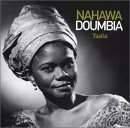 Doubma was born in Mafele, near the border with the Ivory Coast. She was raised by her grandmother, her mother having died shortly having given birth to her. But before she died, Doumbia's mother predicted that her daughter would be a singer — this was a little surprising, since she didn't come from the jeli caste, the hereditary singers. It was something her grandparents tried to fight, but it seemed as if the prediction was correct.
Doubma was born in Mafele, near the border with the Ivory Coast. She was raised by her grandmother, her mother having died shortly having given birth to her. But before she died, Doumbia's mother predicted that her daughter would be a singer — this was a little surprising, since she didn't come from the jeli caste, the hereditary singers. It was something her grandparents tried to fight, but it seemed as if the prediction was correct. 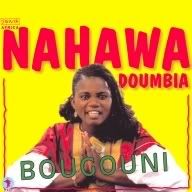 After some experimentation with Western sounds on "Didadi", Nahawa collaborated with African musicians including members of Salif Keita's band, to created a more authentic African sound. This was reflected on "Magoni" produced in 1993. However, on the album "Yaknaw" in 1997, Nahawa produced a true Wassoulou sound, that was often compared to to that of Oumou Sangare. Nahawa sings of social themes, choosing to focus on issues like the position of women in Malian society, the rights of women and children, and the difficulties facing African immigrants in Europe, she also speaks out against polygamy.
After some experimentation with Western sounds on "Didadi", Nahawa collaborated with African musicians including members of Salif Keita's band, to created a more authentic African sound. This was reflected on "Magoni" produced in 1993. However, on the album "Yaknaw" in 1997, Nahawa produced a true Wassoulou sound, that was often compared to to that of Oumou Sangare. Nahawa sings of social themes, choosing to focus on issues like the position of women in Malian society, the rights of women and children, and the difficulties facing African immigrants in Europe, she also speaks out against polygamy. Ali Ibrahim "Farka" Toure.. (October 31, 1939 - March 6, 2006) was born in 1939 in Gourmararusse (in the Timbuktu region), Mali, into the noble Sonhai family. Ali, was the tenth son of his mother but the only one to survive past infancy. He was descended from the ancient military force known as the Arma, and was ethnically related to the Songrai (Songhai) and Peul peoples of northern Mali.
Ali Ibrahim "Farka" Toure.. (October 31, 1939 - March 6, 2006) was born in 1939 in Gourmararusse (in the Timbuktu region), Mali, into the noble Sonhai family. Ali, was the tenth son of his mother but the only one to survive past infancy. He was descended from the ancient military force known as the Arma, and was ethnically related to the Songrai (Songhai) and Peul peoples of northern Mali. During a visit to Bamako in the late 1960's, artists such as Ray Charles, Otis Redding and most importantly John Lee Hooker introduced Ali Farka Toure to African-American music. At first, he thought that Hooker was playing Malian music, but then realized that this music coming from America had deep African roots. Ali Farka Toure was also inspired by Hooker's strength as a performer and began to incorporate elements into his own playing. During those years Ali Farka Toure composed, sang and performed with the famous Troupe 117, a group created by the Malian government after the country's independence.
During a visit to Bamako in the late 1960's, artists such as Ray Charles, Otis Redding and most importantly John Lee Hooker introduced Ali Farka Toure to African-American music. At first, he thought that Hooker was playing Malian music, but then realized that this music coming from America had deep African roots. Ali Farka Toure was also inspired by Hooker's strength as a performer and began to incorporate elements into his own playing. During those years Ali Farka Toure composed, sang and performed with the famous Troupe 117, a group created by the Malian government after the country's independence.